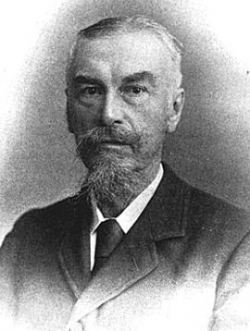Philip Sclater

Philip Sclater
- Born
- 4 November 1829
- Died
- 27 June 1913 (age 83)
Sclater was celebrated during his lifetime as being the most significant contributor to systematic ornithology (the naming, classification and description of birds) and for his studies of American fauna. Working with colleagues, he characterised more than 1,000 species, 135 genera and two new families of American birds.
Sclater had gone to study mathematics at Corpus Christi College, Oxford in 1845, but in his spare time, studied natural history, focusing on birds in particular. He stayed on at Oxford after his degree, and as well as devoting his time to natural history, he studied French, German and Italian. He felt that it was impossible for natural scientists of the time to do good work without being able to speak German.
Sclater was a prolific author, producing more than 1,400 publications, on varied topics from birds in Argentina and America, to antelopes and the animals of North America. He travelled widely, making his first journey to America in 1856, where he spent a month in Philadelphia studying the collection of birds at the Academy of Natural Sciences. He also travelled to Africa where he collected bird skins.
After his return from America, he practised law for several years but continued his studies of natural history and attended meetings of the Zoological Society. He became Secretary of the Council in 1859, a post that he held for 43 years. Sclater had good relationships with a number of American naturalists and he helped the progress of natural history exploration. In 1880, Sclater became a life member of the Royal Geographical Society in 1880. He was close friends with Professor Thomas Henry Huxley.
He investigated why animals and plants differed in various parts of the world, even though conditions would be suitable for similar species. This is known as biogeography (the study of the distribution of plants and animals). Sclater drew up one of the first modern boundaries of biogeographic regions in 1858: On The General Geographical Distribution of the Members of the Class Aves. A biogeographic region is one where the distribution of plants and animals shares the same or similar features.
His studies of geographical distribution will always be considered of fundamental importance
G Brown Goode, 4th September 1896.
This division was based on the terrestrial world of birds, but it also contributed to the knowledge of geographical distribution of vertebrates. Charles Darwin’s theory of evolution was rooted in the understanding of biogeographic regions. These faunal regions were adopted by Alfred Russell Wallace and the system is still used today.



